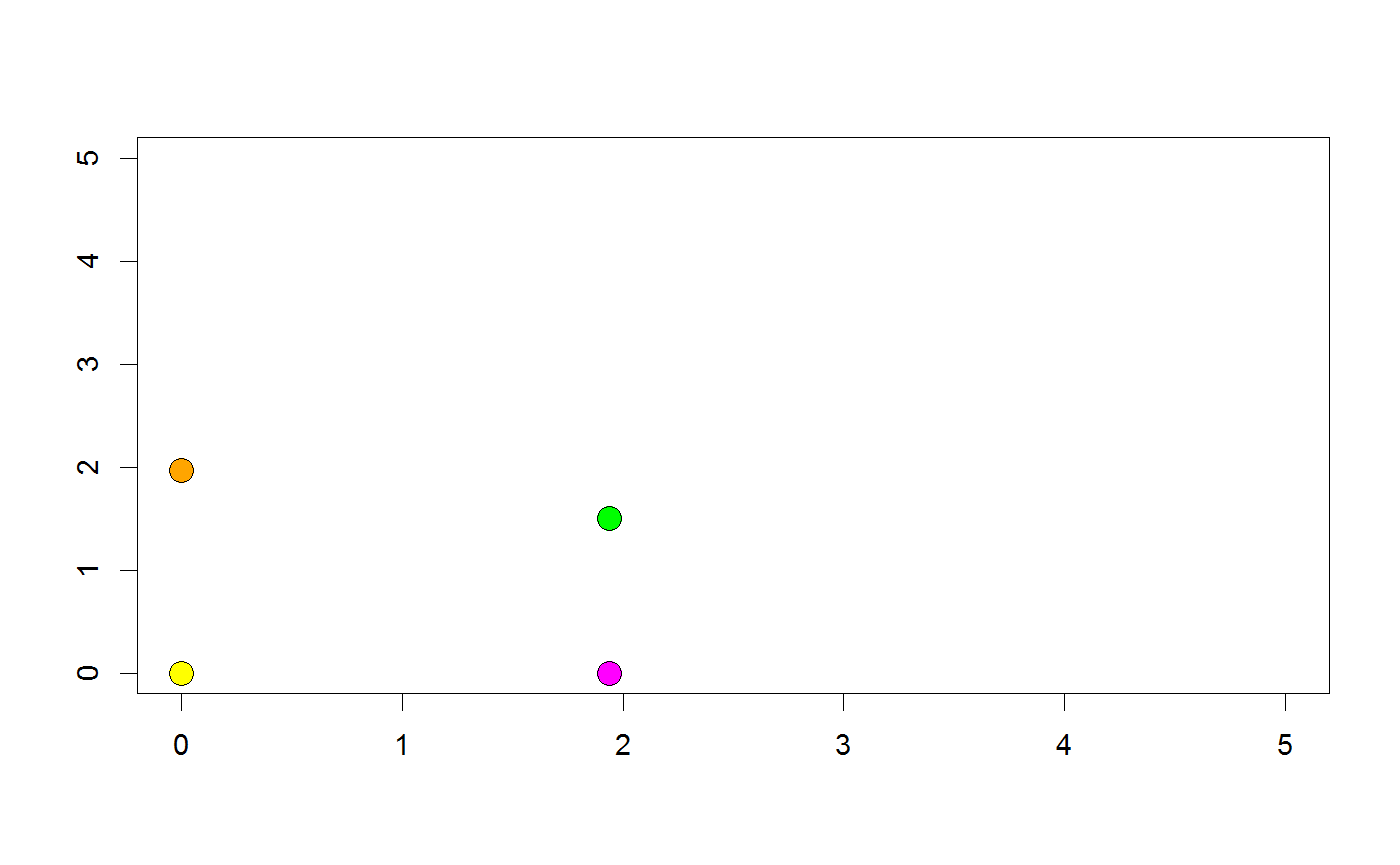Determine the attractors of a model through simulation
Attempts to determine the attractors of a model. The space is discretized into initial points, and
repeated iteration of the model's function is used to approximate the attractors. It is possible
that non-attractor fixpoints will be found by accident. The function
is iterated until the points move less than tolerance (default
sqrt(.Machine$double.eps)) between iterations.
The color of each point is drawn from the col parameter. If the number of points exceeds
the size of $col$, or $col$ is not defined, then reasonable defaults are used instead.
The attractors are dspoints that are added to the model.
simattractors(discretize = NULL, xlim = NULL, ylim = NULL, stride = 8, iters = 1e+18, epsilon = NULL, tolerance = sqrt(.Machine$double.eps), cols = NULL)
Arguments
| discretize | The space between initial points. If not set, the discretization of the range is used. May be set separately from the discretization of the range without overwriting. |
|---|---|
| xlim | The range of x values to search for attractors. Defaults to the limits of the range. |
| ylim | The range of y values to search for attractors. Defaults to the limits of the range. |
| stride | The number of times the function is applied before movement is checked: in essence
finding the attractors for |
| iters | The maximum number of iterations to use. Points that still move greater than
|
| epsilon | The distance at which two points are considered to be the same attractor. Defaults to |
| tolerance | A, usually smaller, distance at which a point is considered to have stopped moving. Defaults to |
| cols | The colors of the attractors. If insufficient not provided, reasonable defaults are used. Generally (but not always) proceeds left to right, then bottom to top. |
See also
dspoint
dsregion
dspolygon
simbasins
Examples
model <- dsmodel(function(X0,Y0) { list(X0*exp(2.6-X0-6.45/(1+4.5*X0)), Y0*exp(2.6-Y0-0.15*X0-6.25/(1+4.5*Y0))) }) model + dsrange(5,5,0.09) + simattractors(discretize=0.02)
